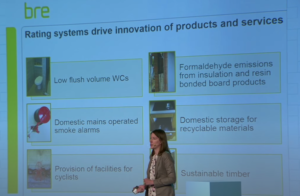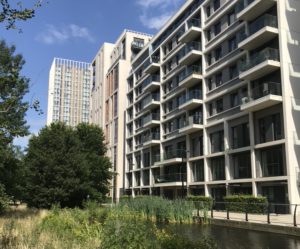An assessment, rating tool or standard can help increase the quality of a new development and demonstrate performance to key stakeholders.
There are many assessment tools that can be used to verify a development project’s health-promoting credentials, sometimes through an independent certification process.
Sustainability and healthy built environment standards are available for different scales and types of development, including buildings and communities. There are also assessment tools to look at existing places and planning policy.
Standards and rating tools are not a replacement for health impact assessment, which can still provide valuable information about how a development or policy can be designed to support health (see below).
The table below provides a list of healthy built environment assessment tools that are available in different countries (see references for links). Tools like Fitwel and WELL are applicable internationally.
Healthy Development Assessment Tools
| Title | Country of Origin or Use | Scale | Date | Author |
|---|---|---|---|---|
| Fitwel | USA | BLDG & NBHD | 2017 | Center for Active Design |
| Healthy Development Assessment (Healthy Peel By Design) | Canada | NBHD & CITY | 2016 | Region of Peel |
| Healthy Development Checklist | USA | BLDG & NBHD | 2007 | San Francisco Department of Public Health |
| Healthy Living and Active Design Scorecard | USA | NBHD & CITY | n.d. | Cedar Creek Planners and Nemours |
| Healthy Streets | UK | NBHD & CITY | 2017 | Transport for London/Lucy Saunders |
| Healthy Urban Planning Checklist | UK | BLDG & NBHD | 2014 | NHS London Healthy Urban Development Unit |
| HUDU Rapid Health Impact Assessment Tool | UK | BLDG, NBHD, CITY | 2019 | NHS London Healthy Urban Development Unit |
| Livewell Development Accreditation | UK | BLDG & NBHD | 2019 | Essex Planning Officers Association |
| The Built Environment Assessment Tool Manual | USA | NBHD | 2015 | US Centers for Disease Control and Prevention |
| The Place Standard | UK | NBHD & CITY | n.d. | NHS Health Scotland, the Scottish Government and Architecture & Design Scotland |
| WELL Standard | USA | BLDG & NBHD | 2014 | International WELL Building Institute |
Health impact assessment
The process of health impact assessment (HIA) has been used to evaluate new programmes, plans, policies and projects since at least the 1980s. Some countries or regions require HIA, for example as part of a planning application for new development. HIA has also been required by The World Bank and International Finance Corporation.(1)
There are many forms of impact assessment and health can be incorporated into these, for example Strategic Environmental Assessments (SEA) and Environmental Impact Assessments (EIA). However, these assessments may not be as comprehensive with regard to health and wellbeing impacts.
An HIA provides valuable information for decision-makers and the public (if published) about potential health impacts arising from a project or plan, alongside mitigating measures. The quantitative component of HIA may focus on health protection from noise or pollution, for example.
The HIA process is not only desk-based and quantitative, but should also incorporate knowledge from affected communities. Participatory workshops or surveys can be used to gather detail about health impacts that are not covered in existing datasets, such as quality of local greenspace or perceived safety. Further guidance is available here on the World Health Organization website.
Reflections on standards
Standards and rating systems for urban development can be a contentious topic. Whether they drive or stifle innovation is a common debate. The posts below offer reflections on built environment sustainability and health standards.
Healthy Built Environment standards
Can standards push innovation?
Cities, Health and Well-being
Why measure urban sustainability and who should do it?
References
(1) Cave B. Assessing the potential health effects of policies, plans, programmes and projects. In: Barton H, Thompson S, Grant M, Burgess S, eds. The Routledge handbook of planning for health and well-being: shaping a sustainable and healthy future. London; New York: Taylor and Francis, 2015: 371–85.
Fitwel: https://www.fitwel.org/
Healthy Development Assessment (Healthy Peel By Design): https://www.peelregion.ca/health/resources/healthbydesign/pdf/HDA-User-Guide-Jun3-2016.pdf
Healthy Development Checklist: http://www.sfindicatorproject.org/
Healthy Living and Active Design Scorecard: http://www.cedarcreekplanners.com/scorecard-for-healthy-living/
Healthy Streets: https://healthystreets.com/home/about/
Healthy Urban Planning Checklist: www.healthyurbandevelopment.nhs.uk
HUDU Rapid Health Impact Assessment Tool: www.healthyurbandevelopment.nhs.uk
Livewell Development Accreditation: https://www.essexdesignguide.co.uk/media/2275/eldp1024-livewell-accred-scheme-award-doc-a4-28pp-v7.pdf
The Built Environment Assessment Tool Manual: https://www.cdc.gov/nccdphp/dnpao/state-local-programs/built-environment-assessment/index.htm
The Place Standard: http://www.healthscotland.scot/health-inequalities/impact-of-social-and-physical-environments/place/the-place-standard-tool
WELL Standard: https://www.wellcertified.com/certification/v2/




